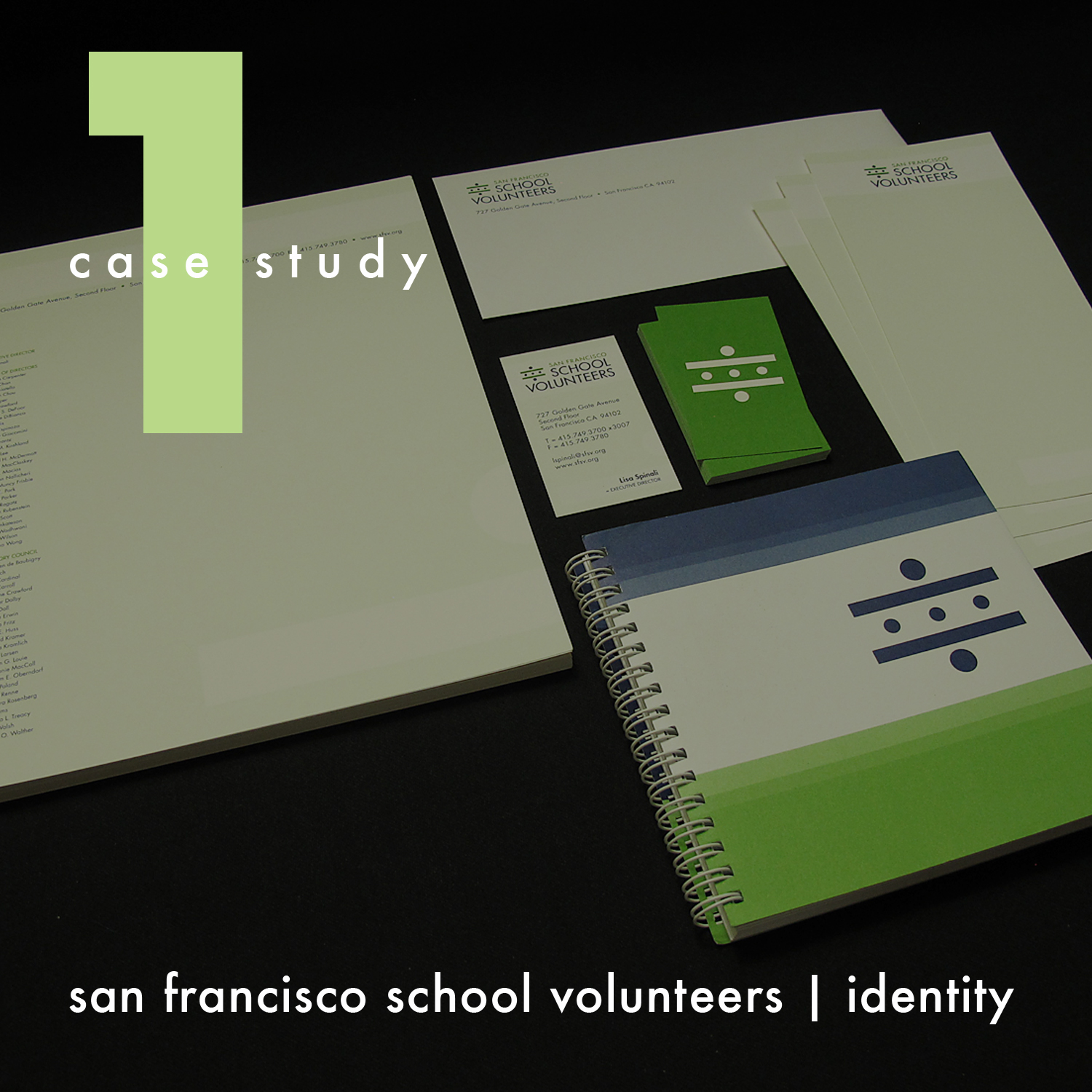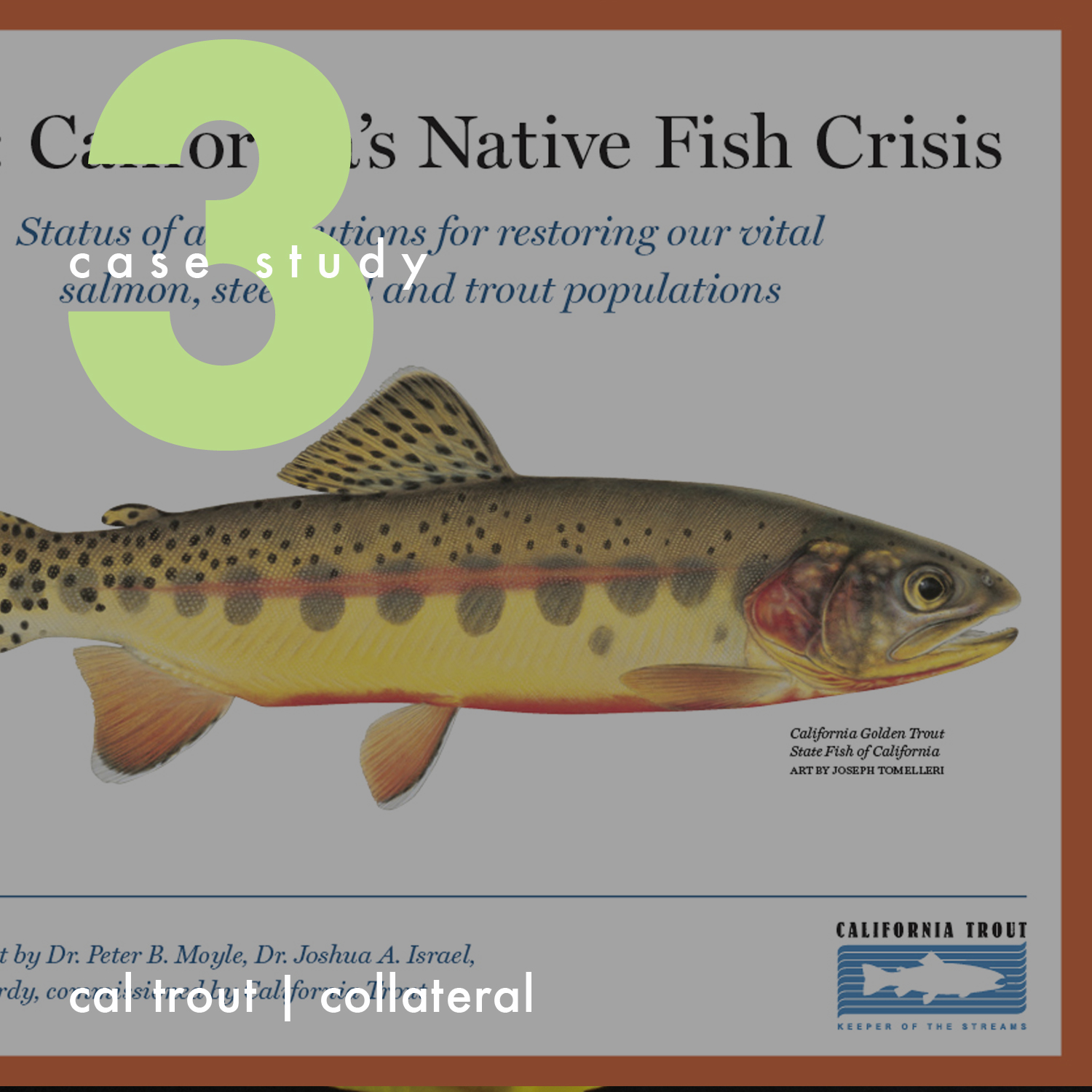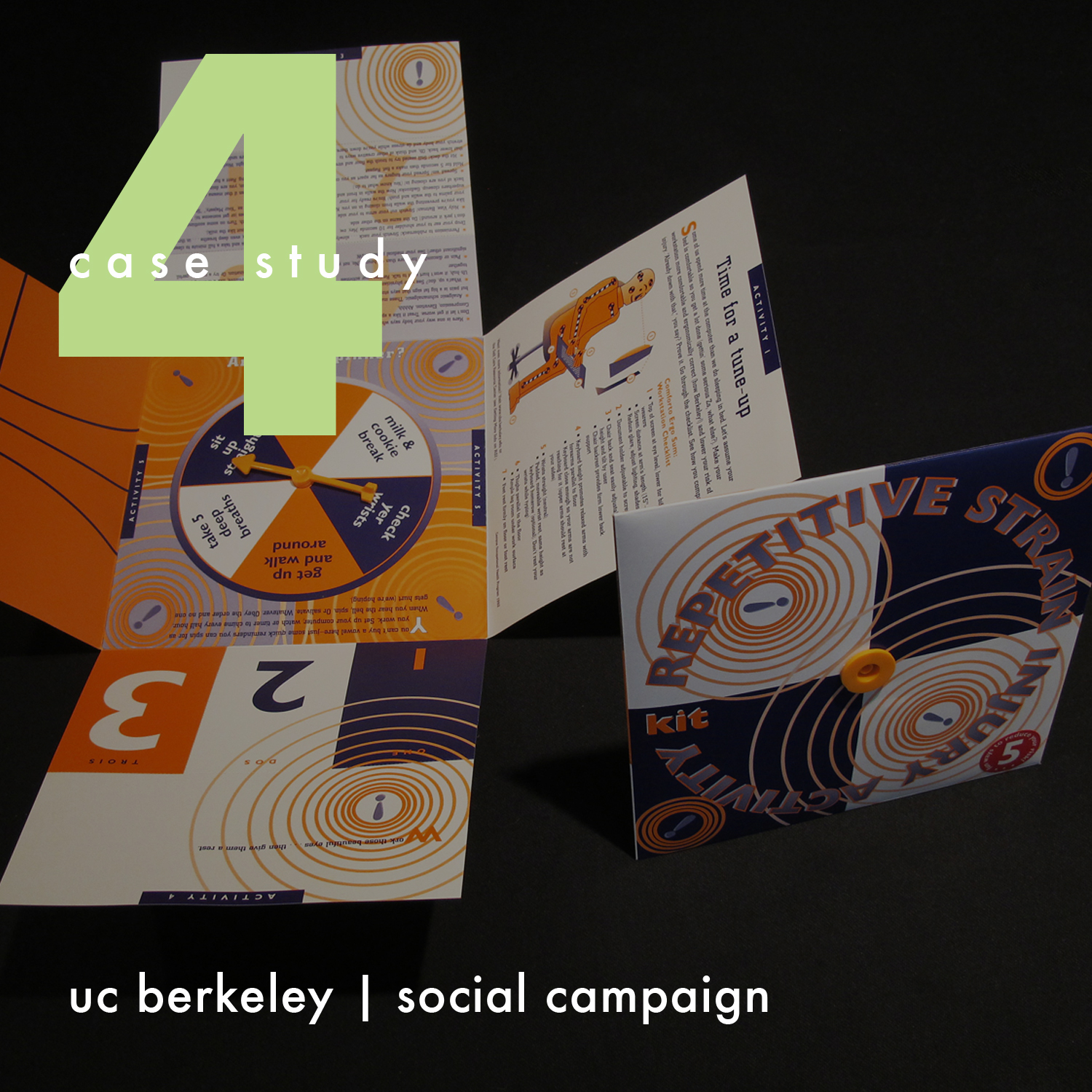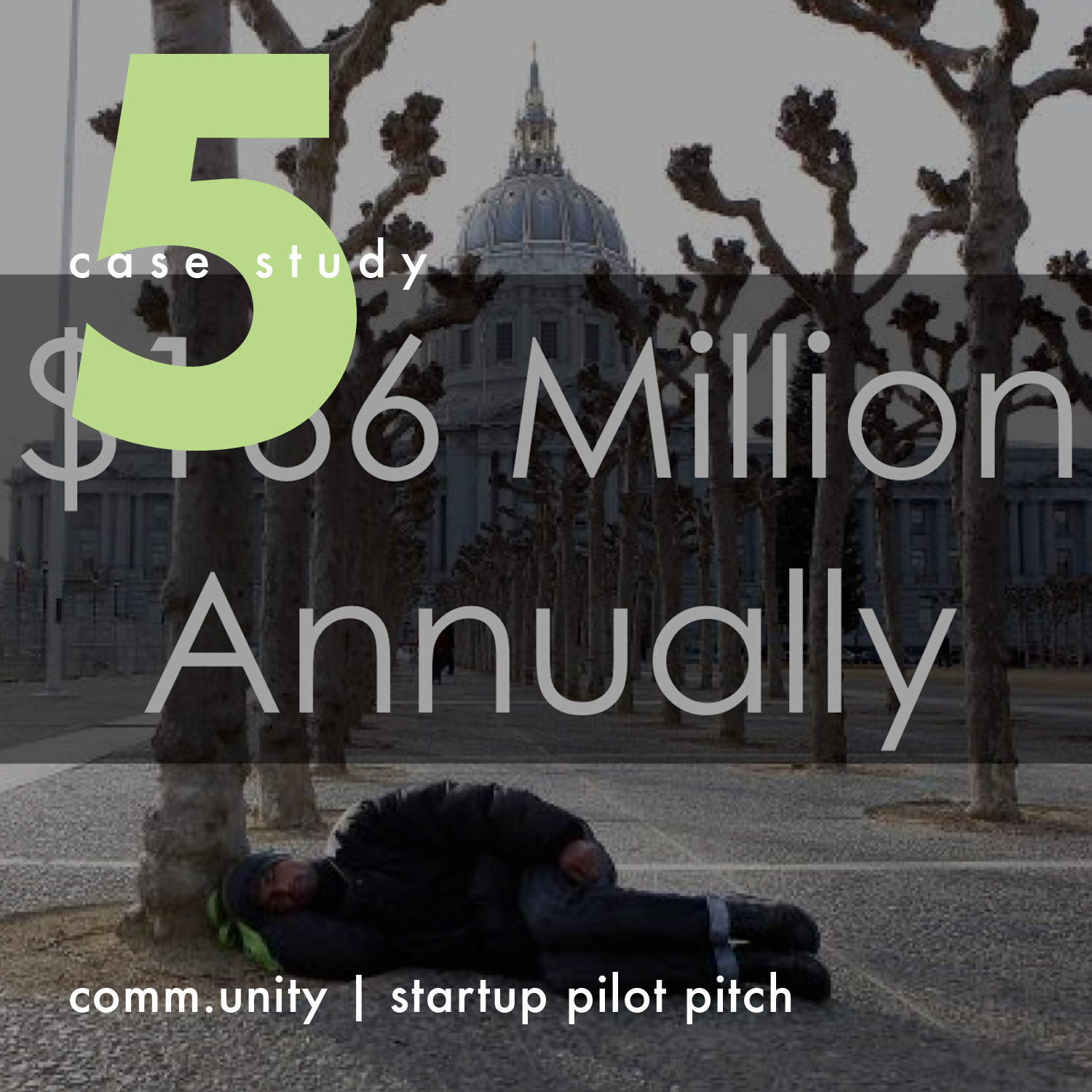> CASE STUDY 5 | STARTUP/PILOT PROJECT
comm.unity
As our final requirement for the MBA program in Sustainable Management at Presidio Graduate School, our team produced a compelling business plan that showed a promising attack on an intractable problem: homelessness. Our 5-month journey explored the opportunities to shake up the construct through technology.
PROBLEM: The City of San Francisco spends $166 million annually in an effort to combat homelessness and support those experiencing it. Total homeless is roughly 7,300, or about 1% of the population, one of the largest per capita of major US cities. The City spends about $22,500/year/person in an attempt to better the lives of homeless people. Hundreds of homeless outreach organizations strive to maximize their impact, but they are disconnected from one another. A convergence of trends—such as the need to increase the impact of services for the city’s growing homeless population, the lack of communication between service providers and loss of institutional knowledge resulting from high worker turnover and burnout, the growth of the local tech industry and its association with gentrification, and the perennial housing shortage—presented a dynamic opportunity for collaboration and innovation.
SOLUTION: comm.unity™ is a for-profit venture based in San Francisco that provides solutions to increase resource efficiency and information sharing among homeless organizations and the individuals they serve. By enhancing their efficiency and engagement, we enable provider organizations to spend more time and money and help those experiencing homelessness directly. Our offerings are an online portal of San Francisco-based, homeless outreach programs and organizations, as well as a corporate sponsored vehicle with WiFi hotspot capability that will transport street teams of partner outreach organizations into the field with tablet devices for portal access.
CHALLENGE(S): The time frame we had to execute this project was extremely quick. Relationship building is crucial, especially when creating a social enterprise. While we did some user study activities, there was still room to do more but our resources and capacity were limited. As a result, proof of concept and model testing were not possible without initial funding for core construction of the network. One other major obstacle despite intent to launch in a tech industry-heavy area, is the extreme competition for housing and the friction that exists between real estate opportunities and social service.
RESULTS: A rigorous framework to test the viability of this venture was used: market studies (competitive, user), analysis, and strategy; operations plan and organizational design, revenue and financial models, risk analysis, and exit strategy. Our main targets for revenue centered around subscriptions to be used by agencies and sponsoring tech companies as a vehicle for philanthropy and public relations. The plan projected breakeven just before year 3, and we thought that since homelessness is no stranger to any big city, the need would be scalable. Initial build of the network would take a very concerted effort to audit and organize existing resources. Our team identified a great opportunity for public-private partnerships and/or social impact bonds to help achieve the goals of efficiency and human dignity. The team did not pursue further development of this project but is always open to sharing our findings should other partners wish to continue with the vision.We presented a comprehensive business plan for the pilot and supporting pitch video (see below).

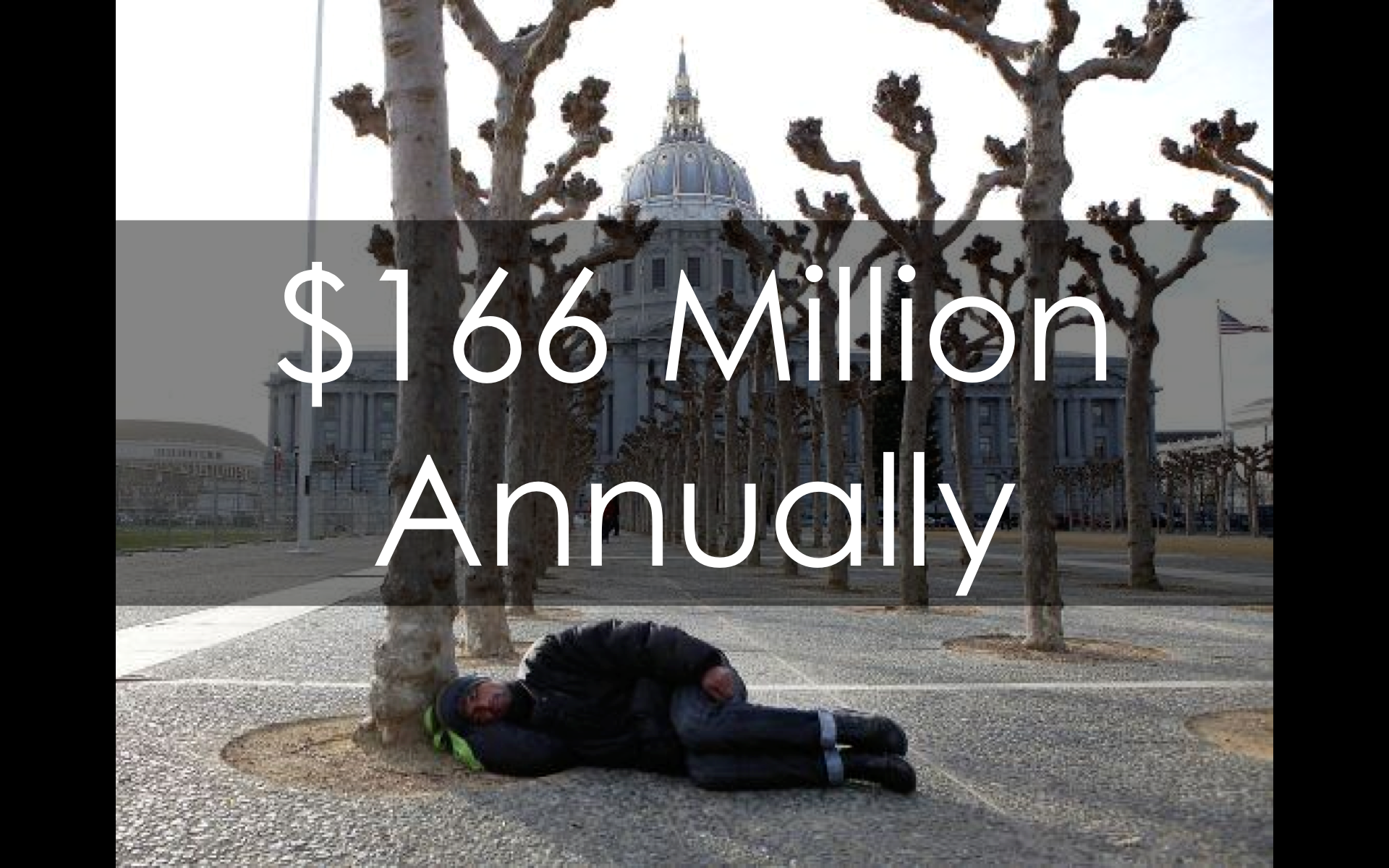
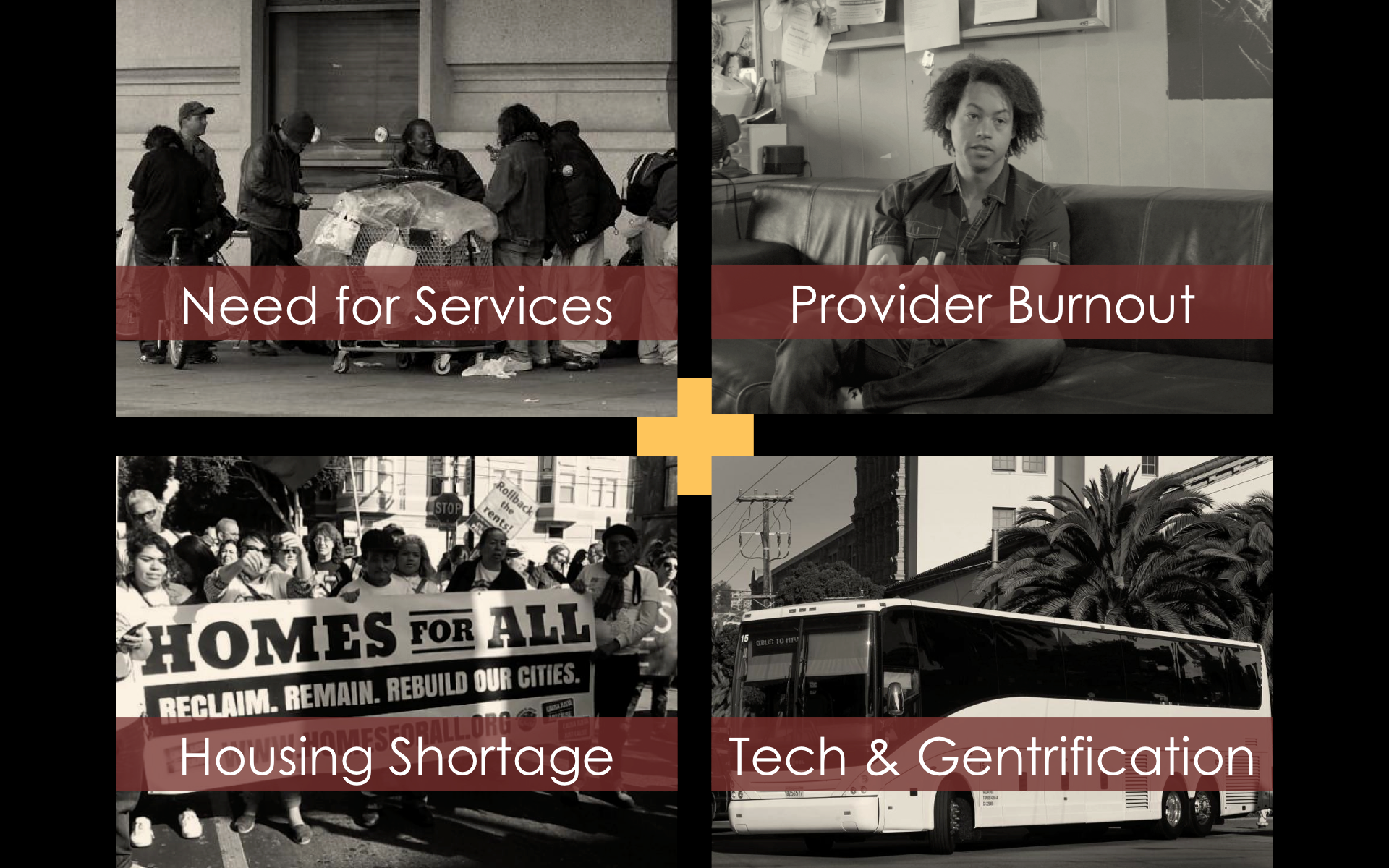
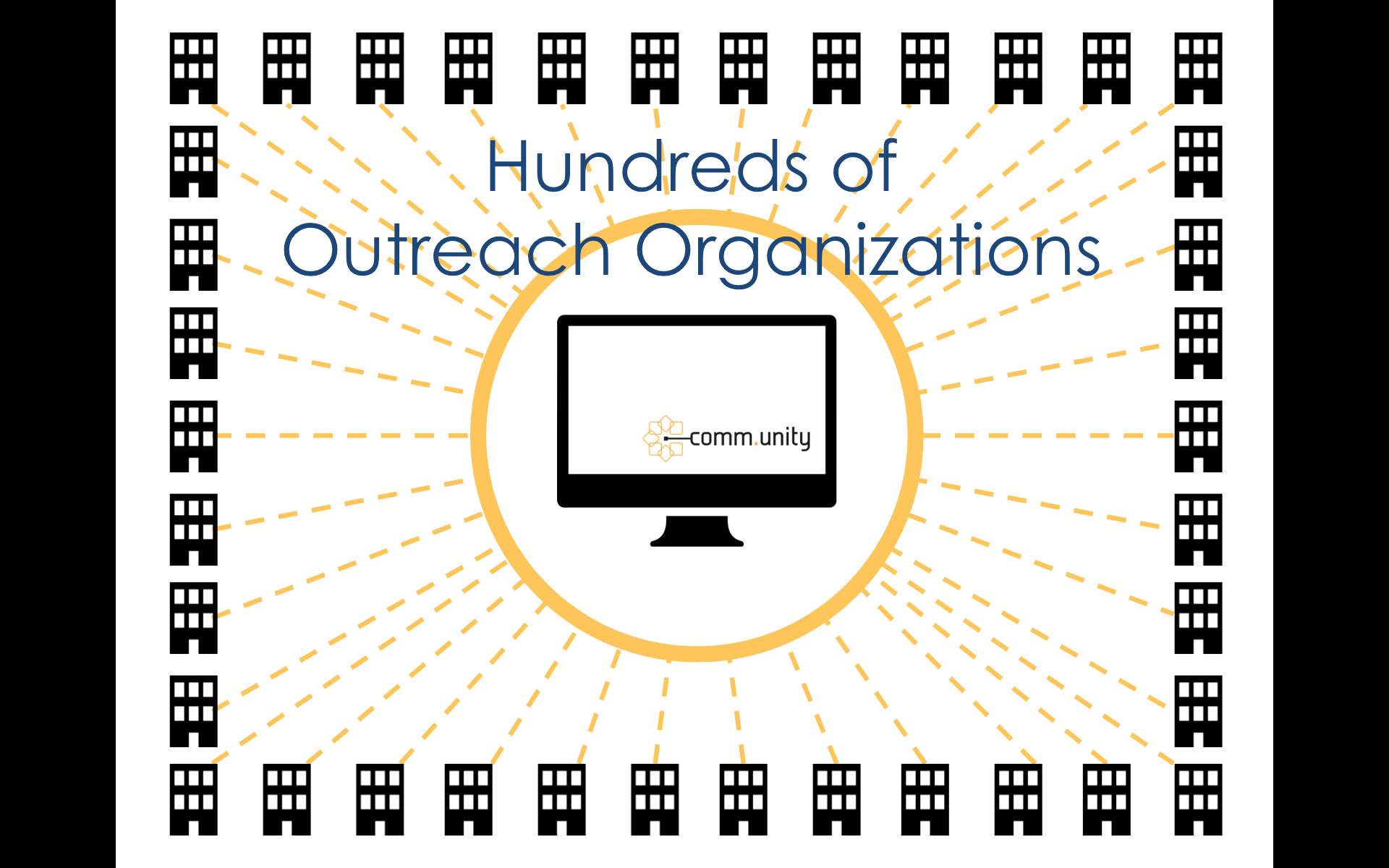
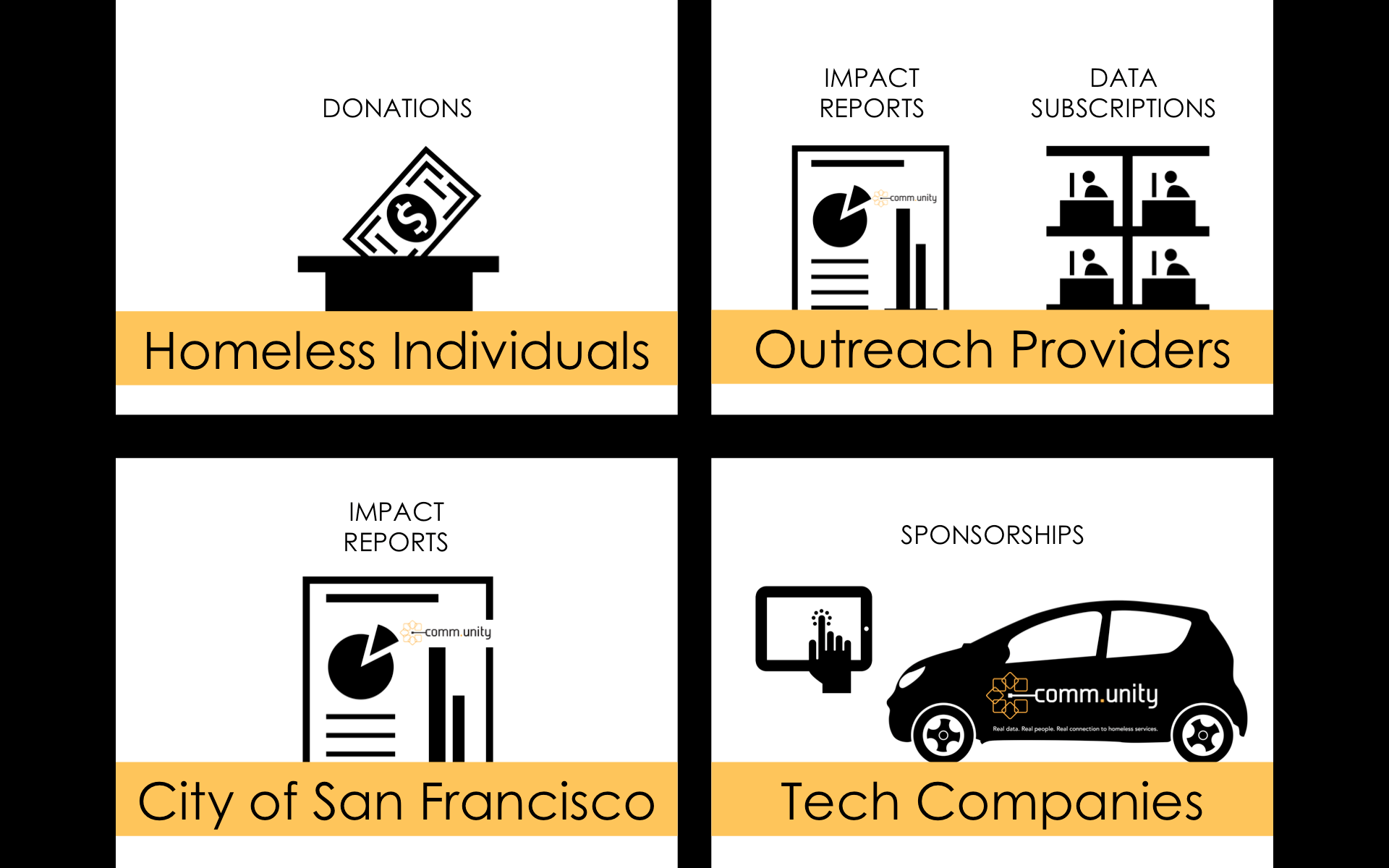
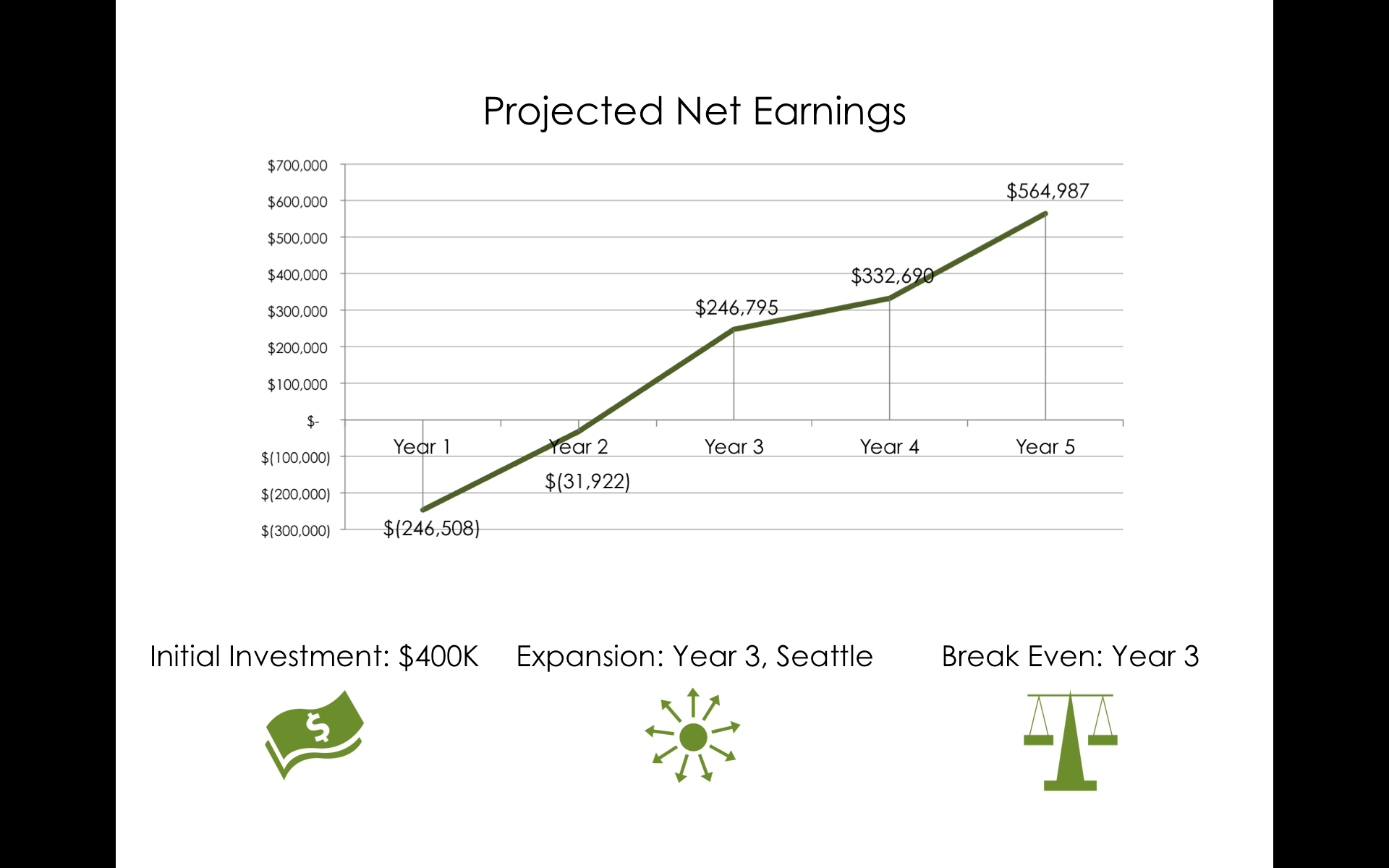
THE LOGO STORY: The logo was inspired by connection of agencies (and pages and pages of their institutional knowledge) and the centralized vehicle by which to achieve it. It represents a very engaged network of stakeholders collaborating on solving a common problem. Use of a modern typeface and a play on .com suggests the tech industry and digital modalities. The name also supports values the company stands for: com=tech; comm=communication; unity=connection.
REFLECTION: Our goal of this venture was to leverage technology for good, and create efficiencies, connection, and faster accessibility to information. This made so much sense as our pilot was to take place in San Francisco, the hotbed of tech startups. While our project would be a welcome innovation, it is still only a small piece of the puzzle. Social ventures are at a disadvantage compared to their counterparts that show high return potential—their value cannot be easily accurately identified or quantified. We must keep trying to innovate on our business models that create more shared value by expanding our view of non-financial capital and return on investment.
PERSONAL ROLES: marketing lead; financial modeling and projections; logo design, naming, and branding; video scene and storyboard crew


